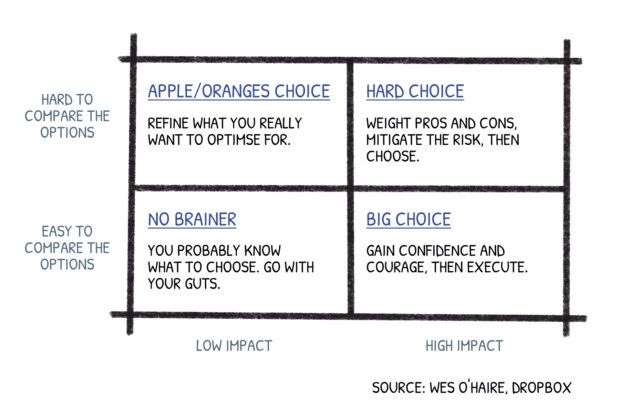Advertisement
How Mental Models Influence Decision Making
By tash
3 min read
Advertisement - Continue reading below

Furthermore, the people surrounding you sometimes tend to take part in your decision-making. Often times, this is sometimes the reasson why individuals aren’t always happy with the outcome. So, what mental model should a person use?
Mental Models
Mental models are the methods we use to help understand and guide our thinking. It only designates things depending on how it works for you.
The function of mental models is not just to think and understand the picture that you see, but also focuses on how your brain works, leading you to a different relatively perspective.
4 Mental Models
-
The Hard Choice Model
Here are some of the options that give a big impact on decisions.
-
- No Brainer – If a person has options and has trouble deciding between the related choices. A quick decision is better.
- Apple/Oranges – When a decision gives you a low impact and compares whole options, this will lead you to a low-impact decision.
- Big Choice – If your dealing with big decisions and the choices are easy to contrast, you just need to list all the pros and cons before executing.
- Hard Choice – Uncomparable options and high-impact decisions rely upon this. You need to take some time and meditate properly.
-
First Principle Thinking
When we face challenges, an analogy comes out. We probably think about how other people would fix the same problem. As a result, we make the same decision. In this way, you save a lot of mental energy. Thus, it is really helpful to base our decisions on other people’s experiences. You can build a foundation that has a good impact on decision-making.
-
Second And Third-Order Consequences
People do have second flaws that are hard to let go of. When making decisions, we are anxious about the first-order consequences. Second-order and third-order consequences are usually opposite. Second-order probably gives a feeling of victory and satisfaction while third-order builds you up. Lastly, you will decide the beneficial effect of the long-term process.
-
Inversion
It is better to look at the opposite side when making decisions.This way, it is easy to determine bad decisions and good ones. You can use the bad decision as a basis to build up the good one.
Mental models reflect a decision system on how you handle the challenges on your own. With these four models, you will be more aware of what should be the outcome of your decisions and how to improve upon them.
Advertisement - Continue reading below













